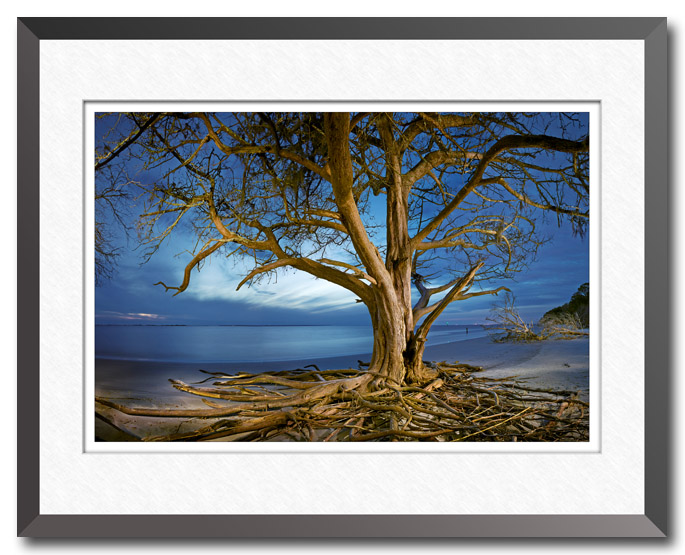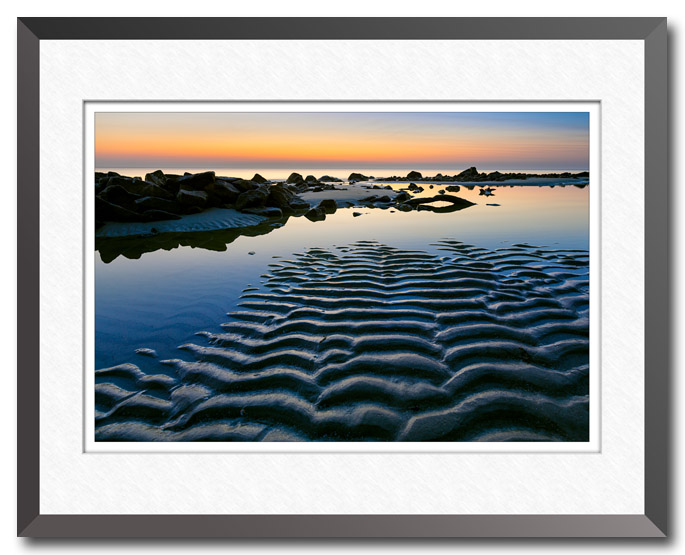This is another example of using twilight as the best time for fine art landscape photography. It’s tempting to stop taking pictures as soon as the sun sets, but you’d be missing some of the best light. This time after the sun sets (or before the sun rises) is often called the “blue hour,” but it really only lasts for about 30 minutes.
I found this tree on the beach on Jekyll Island and I was immediately intrigued by the exposed roots and the way they echoed the bare branches of the tree. I wanted the roots to play a dominant and dramatic role in the photo. Since the beach was lined with tall trees, there wasn’t any light on the tree itself. Without some additional light, the tree would be a silhouette and the roots would have just blended into the dark shadows on the beach.
Since it was well after sunset and getting pretty dark I used that to my advantage. I always carry an LED flashlight with me, and in this instance, it was the perfect way to light up the tree. The camera was mounted on a rigid tripod, and the late hour allowed me to use a long, 30 second exposure. That gave me just enough time to run out away from the camera and use the flashlight to paint light onto the tree. Notice that I positioned myself well off to the side of the tree to create shadows too. It’s the shadows that give the tree its depth.
A 16 X 20 inch print of this photo is currently available at The Trafik Jam in Mackinaw, Illinois.





